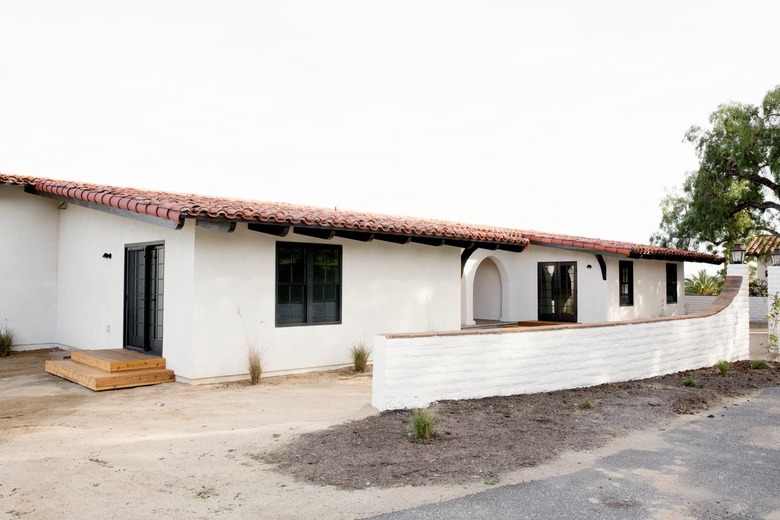Preapproval Vs. Prequalification: What's The Difference?
If you're in the market for a new house, getting prequalified will make the search easier, but a preapproval is even better. What's the difference? You can get a prequalification letter from your lender simply by supplying your financial information, but a preapproval letter requires extensive financial documentation, and the lender checks your credit score and also does a background check. Mortgage prequalification is much easier and is a good first step, but if you're serious about buying, preapproval is a better demonstration to sellers that you have what it takes to close the deal.
Housing markets in many parts of the country are extremely competitive, and sellers often receive multiple offers from homebuyers. If you come to a competitive market without mortgage preapproval, your offer is likely to go to the bottom of the pile. Prequalification isn't nearly as helpful because it's just an acknowledgement from the lender of the price range you can afford. A preapproval letter is the lender's statement that you will receive the loan should your offer be accepted.
Tip
To be prequalified for a loan, you supply your basic financial information to a lender, who draws up a ballpark estimate of how much house you can afford. Preapproval requires a loan application, documentation, a credit check and usually a fee, and it's a more official step on the way to getting loan approval.
Preapproval vs. Prequalification
Preapproval vs. Prequalification
Prequalification is a quick procedure that can often be completed over the phone or even online. The lender queries you about your financial assets and liabilities and makes a good-faith estimate of the amount you can afford. The conversation usually includes a discussion of the various products the mortgage lender offers along with recommendations that would best fit your financial picture, and after deciding on the best program, the lender sends you a letter confirming that you meet the criteria for that program. The entire process, from consultation to letter in hand, can happen in as little as three days.
A prequalification letter is useful to have when you're house hunting because it shows you've been working with a lender, but it's really only a shopping tool, and it isn't backed by income or credit verification. Preapproval, however, is the next step. Rather than relying on unverified information you supply, it is based on an extensive credit and financial background check, and it specifies the exact loan amount for which you're approved, so it carries more weight. It may also cost you money, whereas a prequalification letter is free.
Why Even Get Prequalified?
Why Even Get Prequalified?
Unlike preapproval, prequalification is an informal process that gives you a realistic idea of the costs involved in the homebuying process. It's basically a planning tool that gives you a general idea of how much home you can afford, and because it's free, there are few reasons not to get one. It requires no commitment on your part and will help you look at houses that are within your price range (preventing you from falling in love with one that is way outside your budget).
Prequalification can help you develop a more realistic picture of your financial situation, and in the end, the prequalification process may convince you to keep renting your home rather than buying a new one. If you do decide to continue with the homebuying process, a preapproval letter demonstrates to sellers that you're a serious buyer.
The Advantages of Mortgage Preapproval
The Advantages of Mortgage Preapproval
Getting preapproval for a mortgage varies from lender to lender, and while some lenders offers it for free, it's more common to pay between $300 and $400 for preapproval. The main difference between being preapproved and prequalified is that preapproval requires financial and credit verification, and most banks won't do the legwork required for that for free. Even though you have to pay a fee, though, you might not notice it because it often gets rolled into the closing costs when the loan originates. So, what are the benefits you get for that outlay of cash?
For starters, when you have a preapproved loan, your offer is most likely not contingent on financing, and that's music to a seller's ears, making the deal more likely to go through and to go through quicker. Preapproval is a powerful negotiating tool that might even entice a seller to accept a lower offer. Another advantage of preapproval is that it locks in your interest rate for a period of time, which can reduce stress and save you money in times when financial markets are volatile. A third benefit is that preapproval tells you a specific loan amount, and that can save you time and disappointment as you eliminate homes outside your price range.
How to Get Preapproval for a Mortgage
How to Get Preapproval for a Mortgage
It's so easy to get prequalified for a loan that a borrower can often do it with a phone call to a real estate agent, but getting preapproved is a little more complicated. First, you'll have to fill out a lengthy mortgage application form and then provide written documentation for all your financial information. Then, there's the fee. The good news is that after you've done all that work, the lender does the rest, usually using software algorithms to do the calculations that determine the mortgage terms. Because the process is automated to a large degree, you can apply for loan preapproval online.
To get a preapproval letter, the bank examines all aspects of your financial situation, including:
- Pay stubs
- Bank statements
- Tax returns
- IRS tax documents, such as W-2s or 1099s
- Other outstanding loans and mortgages
In addition, the bank performs a credit check. While not all problems in your credit report or credit history will disqualify you for a loan, some might, and those that don't may result in a higher interest rate or require a higher down payment. The interest rate for a preapproved mortgage is determined at the time of approval, and it remains in force for a limited time period determined by the mortgage company — usually 60 days. Once the bank issues the preapproval letter, you can make an offer up to the preapproved loan amount knowing that you will get the loan.
Loan Preapproval Isn't Always a Green Light
Loan Preapproval Isn't Always a Green Light
It's important to remember that once you get your approval letter, you can still be denied the mortgage loan, and this happens for the following reasons (and others):
- You made a large purchase on a credit card during the loan approval period
- You lost your job
- Your credit score dropped due to new information appearing on the credit report
Applying for loan preapproval is considered a "hard" pull as far as checking your credit is concerned, and that can have an impact on your credit score. Even though it's usually a small impact, this is a good reason to avoid applying for too many loan approvals in the span of a few years. That's why at the beginning of a search for a new home, a prequalification letter is a better tool than an approval letter. Besides being free, prequalification has no effect on your credit, and it allows you more flexibility when you're still sitting on the fence. Wait until it's time to get serious before applying for loan preapproval.

